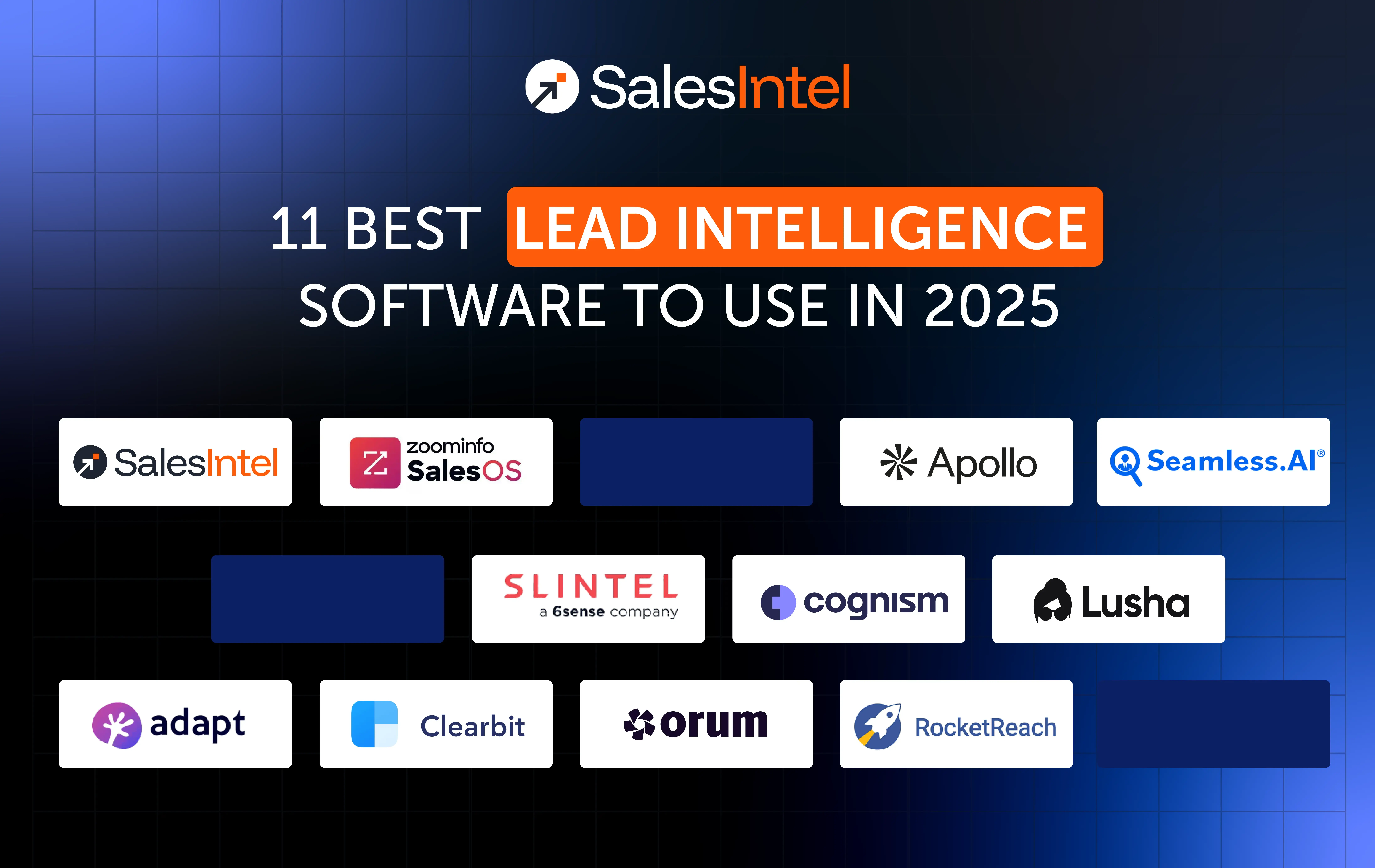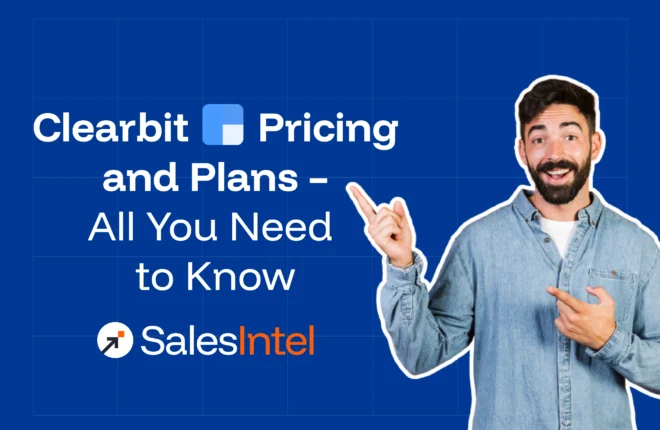From scrappy teams just getting their feet wet in account-based marketing (ABM) to seasoned pros looking for that next competitive advantage, intent data is changing the game and allowing marketers to deliver more personalized and effective campaigns that drive more engagement, conversions, and revenue.
However, with the abundance of data available, it can be overwhelming to know where to start and how to effectively leverage this information in any tangible way.
In this article, we’ll cover the basics of intent data – what it is, where it comes from, and how to leverage it to rapidly improve your ABM strategy. We’ll also look at some real-world playbooks you can use to take your ABM campaigns to the next level.
Watch the webinar here: ABM Mastery: Enhancing Your Campaign Strategy with Trigger Stacking
What is Intent Data?
Intent data refers to the digital signals that indicate a potential buyer’s interest in your products or services.
“Intent is a signal that can help you determine what an account might do next”
– Ariana Shannon, Director of Marketing at SalesIntel
These “signals” are varied and (as we see below) come in many different types. By analyzing these signals, you can gain valuable insights into where a prospect is in their buying journey, what specific topics or solutions they are researching, and the perfect moment to reach out.
Intent Data Types
There are several sources of intent data, each offering unique insight into your target audience’s behavior:
News Data: News Data includes information about company events, such as funding rounds, leadership changes, or product launches that can indicate potential shifts in a company’s business strategies, priorities, areas of investment, and current or future need for a specific type of solution. These alerts provide a unique touchpoint to engage with potential buyers before your competition.
Partner Data: Partner data comes from your trusted industry partner organizations. Like you, these companies move prospects through their sales and marketing funnels. The data from these partners provides unique visibility into which companies are considering onboarding a solution from a company with which you already have an established relationship, integration, etc.
Leveraging partner data can shape everything from perfectly timing your outreach to crafting highly relevant messaging highlighting how your solution can complement or enhance your prospects’ tech stacks.
First-Party Intent Data: First-party intent data refers to actions occurring directly on your website or owned digital properties that indicate increased interest, such as:
- Gated content downloads
- Pageviews
- Social media interactions
- Webinar attendance
- Form submissions
Solutions like SalesIntel’s VisitorIntel feature allow you to capture first-party intent data to see which companies are visiting your website to build a more accurate picture of interested prospects engaging with your owned content.
Review Site Data: As the name suggests, review site data looks at sites like G2, Capterra, TrustRadius, and Gartner to provide insights into which accounts are evaluating your solutions against competitors, enabling you to tailor your positioning and objection-handling strategies.
PredictiveIntent® Data: SalesIntel’s PredictiveIntent leverages multiple intent signals to build a comprehensive account score based on online activity from sources including:
- News data and alert triggers
- Account firmographic growth signals
- Account tech installs and adoption
- Research, survey, and interview data
- Exclusive partnership data
- Publisher data
By narrowing your focus on best-fit accounts and contacts that are actively showing interest and intent, you can engage prospects early in the buying cycle and tailor your outreach based on your prospect’s immediate need or pain point.
Buyer Intent Data: Buyer intent data, or third-party intent, focuses on accounts actively researching solutions and those that may be closer to making a purchasing decision. This data enables you to prioritize outreach toward prospects with a high level of interest in your offerings and tailor your messaging based on their needs and interests.
The 4-D Framework:
The 4-D Framework provides a structured methodology for leveraging intent data and building effective activation plays. By aligning your intent data sources, outreach channels, messaging and content, and tracking mechanisms, you can create a cohesive and effective ABM strategy.
- Data: Start by identifying the specific intent signals and data points that will trigger your outreach efforts. The key is pinpointing the tangible actions or “triggers” that indicate an account is interested and ready for engagement. This could be website visits, third-party intent, industry news, review site engagement, etc.
- Distribution: Once you’ve identified the relevant triggers, you need to determine the most effective distribution channels for reaching those accounts that have triggered an outreach. This could be email, social media, paid advertising, direct mail gifting, etc. The idea is to map the right distribution mix based on the specific trigger signals you’re targeting.
- Destination: This component focuses on creating compelling content and messaging that directly addresses the pain points and interests signaled by the intent data and helps move the account further along in the buyer’s journey. This could be case studies, whitepapers, webinars, or product demos.
- Direction: Finally, you need measurement mechanisms to track whether or not accounts are engaging with your destination content and progressing in the right direction. Establish clear goals and implement tracking tools to measure the success of your activation plays. This might involve tracking website visits, form submissions, or direct engagement with your sales team.
Trigger Stacking with Intent Data
While intent data alone can provide valuable insights into your target account behavior patterns, only looking at one type of intent or one signal doesn’t always tell the whole story.
Instead, the true potential of intent lies in combining multiple signals to create a more comprehensive understanding of an account’s real buying journey and determine the optimal time to reach out with personalized messaging. That’s the power of trigger stacking.
“Trigger stacking” involves combining multiple intent signals and data points to create a more accurate understanding of an account’s interests, pain points, and stage in the buying journey. By layering different signals, you can more accurately identify the optimal time to engage with a target account and tailor your messaging to resonate with their specific needs.
For example, you might layer website intent data (an account visits a specific product page) with third-party intent signals (that the company is researching similar solutions on external sites) and news data (the company just received funding). This combination of signals can provide a more holistic view of an account’s behavior and readiness to engage.
By stacking triggers together, you can be more confident that this account is actively in-market and ready to engage with your sales team. This would be the optimal time to reach out with a personalized, relevant message that addresses their pain points and interests.
Intent-Based ABM Plays
The possibilities for utilizing intent data in your ABM are vast, but as you build out your strategy, consider implementing activation plays for different stages of the customer lifecycle:
- Prospecting Plays: These plays apply to accounts that are not currently in your sales or marketing funnel. Leverage intent signals to identify and engage new accounts that are researching solutions like yours.
- Opportunity Plays: Focus on accounts that have already been in your pipeline but didn’t convert, such as closed-lost deals or stalled opportunities. Tailor your outreach based on the specific reasons they didn’t buy or progress.
- Customer Plays: Engage existing customers with expansion opportunities, renewals, or referral programs. Additionally, you can monitor intent signals to identify customers who may be at risk of churn or interested in complementary products.
Re-engaging Closed-Lost Accounts
There’s no sugar-coating it, lost deals suck. All that hard work you and your team have put in to bring in a lucrative deal that, for one reason or another, just falls apart. Maybe their budget was cut, or maybe they had some internal leadership changes, either way, the revenue is lost. But there is a silver lining here.
Closed-lost plays are particularly powerful for re-engaging accounts that didn’t convert. At a minimum, you know what solutions they were interested in and the budget they had to work with. You may also have information like the members of their buying committee and the specific reason they didn’t move forward with you. Even if a deal falls through, you can leverage this data to bring them back into your funnel.
Here’s a three-step process you can follow to build your own play:
- Cohort Your Closed-Lost: Segment your closed-lost accounts based on the reasons for loss, verticals, internal personnel changes, etc. This will allow you to identify patterns and trends in your lost accounts and determine which accounts to actively re-engage.
Inevitably, some deals will be lost because the account was just not the right fit for your solutions (they were outside your ideal customer profile (ICP)). These are not the accounts to re-engage. However, accounts that matched your ICP and had another reason for loss are perfect candidates for a re-engagement play.
- Speak Directly to The Reason: With the context for why you lost the deal, create tailored content and outreach that directly addresses the specific objections or reasons for loss and show them what’s changed at your organization or theirs.
For example, if an account didn’t buy due to a lack of certain features, highlight recent product updates that address those gaps. If there was a change in leadership, research the new decision-maker’s background and priorities to craft a compelling message that shows why your solution is a perfect fit.
- Get Creative: Closed-lost is where gifting can THRIVE! Be creative, nuanced, and positive with your follow-ups based on the account and your conversations with the decision-maker.
For example, maybe your prospect mentioned they enjoyed fishing – send them a mini cooler to keep their beverages cold out on the water. You could even put a note inside that says something fun and light-hearted like: “Just dropping a line to see if anything’s changed on your end”.
The exact item(s) will vary, but the more you can stand out and brighten someone’s day, the greater the chance that prospect will re-engage.
Get Scrappy with First-Party Data
So far, we’ve talked about ‘ideal” scenarios where you have all the resources you need to build powerful trigger-stacking campaigns. However, not every company has access to the data and marketing operations resources to build a highly sophisticated strategy. If you’re looking for somewhere to start, don’t overlook the power of your own first-party data.
While first-party intent is limited to only your owned properties, it provides a powerful and reliable signal of buying intent since you know the accounts on your site are actively researching your solutions specifically.
Additionally, since first-party intent allows you to see the pages your audience visits, you can precisely identify what solutions they are interested in and shape your outreach accordingly.
Here’s how you can incorporate first-party intent into your trigger-stacking initiatives.
Identify Interested Accounts
Using a first-party intent data tool like VisitorIntel, you can identify which accounts are visiting your website, looking at pricing or product pages, or viewing other high-intent areas of your site.
Filter by ICP
Using your ICP as a guide, you can narrow down the list of accounts based on firmographic and technographic data like industry, company size, revenue, technologies used, etc.
Layering ICP filters onto your first-party intent data will filter out poor-fit accounts that may have visited a high-intent page by accident or just aren’t right for your solutions, and leave you with a valuable list of companies that are actively showing purchase intent signals AND are a good fit for your products/services.
Find Your Buyers
With your list of engaged accounts in hand, you can leverage a B2B contact database to find contact information for the specific roles and job functions involved in the buying process at each company. This could be marketing leaders, IT managers, HR directors, etc. The exact roles and functions should correspond to your ICP.
Retarget and Re-engage
Once you’ve got your bullseye list of decision-makers at your target accounts, you can add them to a remarketing campaign to re-engage those who didn’t initially convert.
The beauty of building a campaign this way is that because these accounts have already visited your website and shown buying intent, they are much more likely to click on your ads. Research has shown that retargeted website visitors are 70% more likely to click through on an ad than those who haven’t.
While this list will likely be much smaller than the one you initially started with, this is a much higher-value audience and far greater use of your ad budget.
Personalize Your Outreach
The retargeting framework we’ve outlined is already a brilliant first step in your trigger stacking journey. But suppose you want to take things one step further. In that case, you can break out your retargeting audiences by the exact content, topics, or pages they browsed and tailor your outreach to speak directly to the benefits or pain points associated with those pages.
For example, you could build audiences of accounts that have visited a product comparison page between you and a competitor. When you build your ads you can highlight the main differentiator(s) between you and that competitor, so when that audience is served your ad, it is highly relevant and more likely to resonate.
While this framework might still sound like a heavy lift, all of the target account list-building, ICP filtering, and contact data gathering can be done in just a few clicks using SalesIntel.
From Signals to Strategy
The key to ABM success isn’t just investing in tools and technologies – it’s about having a solid strategy and execution plan. By leveraging the power of trigger stacking and the 4-D Framework you can identify the perfect moment to engage your target audience and build highly effective activation plays that resonate. With the right strategy on your side, you can run ABM campaigns with pinpoint accuracy that convert more accounts and drive more business.
Schedule a demo today to see how SalesIntel can provide you with all the data you need to take your ABM strategy to the next level!



![10+ Sales Pipeline Management Tools [+Tips]@4x](https://salesintel.io/wp-content/uploads/2025/09/10-Sales-Pipeline-Management-Tools-Tips@4x.webp)
